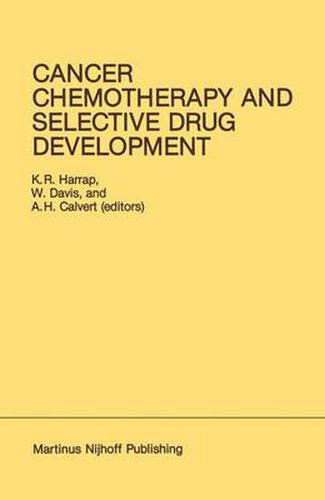Readings Newsletter
Become a Readings Member to make your shopping experience even easier.
Sign in or sign up for free!
You’re not far away from qualifying for FREE standard shipping within Australia
You’ve qualified for FREE standard shipping within Australia
The cart is loading…






This title is printed to order. This book may have been self-published. If so, we cannot guarantee the quality of the content. In the main most books will have gone through the editing process however some may not. We therefore suggest that you be aware of this before ordering this book. If in doubt check either the author or publisher’s details as we are unable to accept any returns unless they are faulty. Please contact us if you have any questions.
Over the past 30 years many significant advances have been made in the management of a number of disseminated malignant diseases. The prognosis for diseases such as childhood leukaemia, choriocarcinoma and Hodgkin’s disease has gradually been transformed as better anti tumour agents have become available and their clinical use has been refined. During the past 10 years the advent of new agents, particularly cisplatin, bleomycin and the podophyllotoxins, has allowed the cure of disseminated testicular tumours. This degree of success has not, however, been achieved in the case of a number of other common cancers. Ovarian carcinoma is tantalisingly chemo-sensitive and although there are long term survivors from disseminated disease, these are only a small proportion of the total. Breast cancer, although sensitive to a multitude of drugs appears to have yielded neither survival benefit, nor cure to the efforts of therapists, while tumours such as those of the colon remain stubbornly unresponsive. Against this backcloth it is apparent that additional more selective treatments are needed if further impact is to be made on the problem of cancer. The development of such agents requires the integration of a multidisciplinary effort encompassing the fields of chemistry, biology and medicine. This symposium provided a forum for clinical and preclinical sCientists, where current aspects of cancer treatment were reviewed and approaches to the development of a new generation of more selective anticancer drugs discussed.
$9.00 standard shipping within Australia
FREE standard shipping within Australia for orders over $100.00
Express & International shipping calculated at checkout
This title is printed to order. This book may have been self-published. If so, we cannot guarantee the quality of the content. In the main most books will have gone through the editing process however some may not. We therefore suggest that you be aware of this before ordering this book. If in doubt check either the author or publisher’s details as we are unable to accept any returns unless they are faulty. Please contact us if you have any questions.
Over the past 30 years many significant advances have been made in the management of a number of disseminated malignant diseases. The prognosis for diseases such as childhood leukaemia, choriocarcinoma and Hodgkin’s disease has gradually been transformed as better anti tumour agents have become available and their clinical use has been refined. During the past 10 years the advent of new agents, particularly cisplatin, bleomycin and the podophyllotoxins, has allowed the cure of disseminated testicular tumours. This degree of success has not, however, been achieved in the case of a number of other common cancers. Ovarian carcinoma is tantalisingly chemo-sensitive and although there are long term survivors from disseminated disease, these are only a small proportion of the total. Breast cancer, although sensitive to a multitude of drugs appears to have yielded neither survival benefit, nor cure to the efforts of therapists, while tumours such as those of the colon remain stubbornly unresponsive. Against this backcloth it is apparent that additional more selective treatments are needed if further impact is to be made on the problem of cancer. The development of such agents requires the integration of a multidisciplinary effort encompassing the fields of chemistry, biology and medicine. This symposium provided a forum for clinical and preclinical sCientists, where current aspects of cancer treatment were reviewed and approaches to the development of a new generation of more selective anticancer drugs discussed.